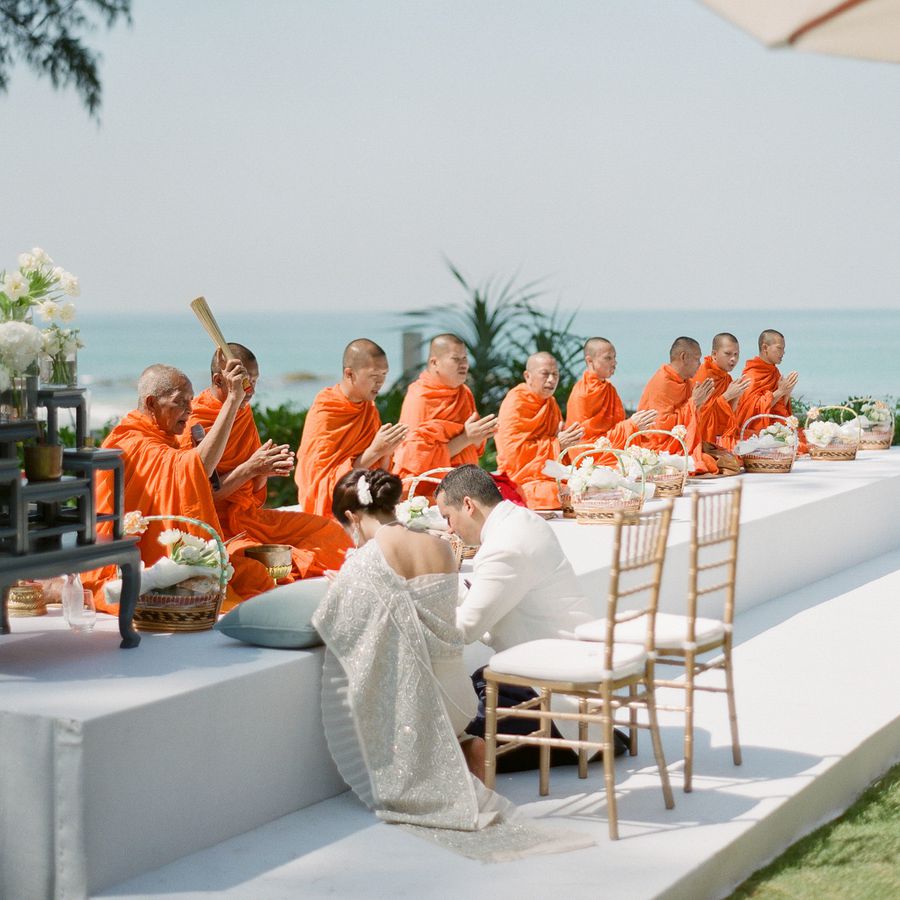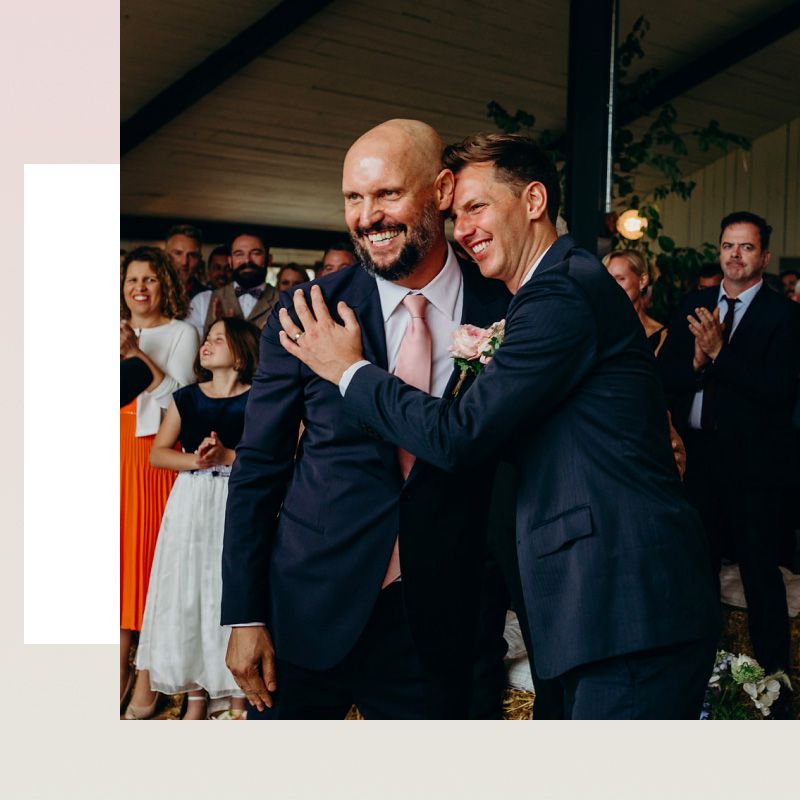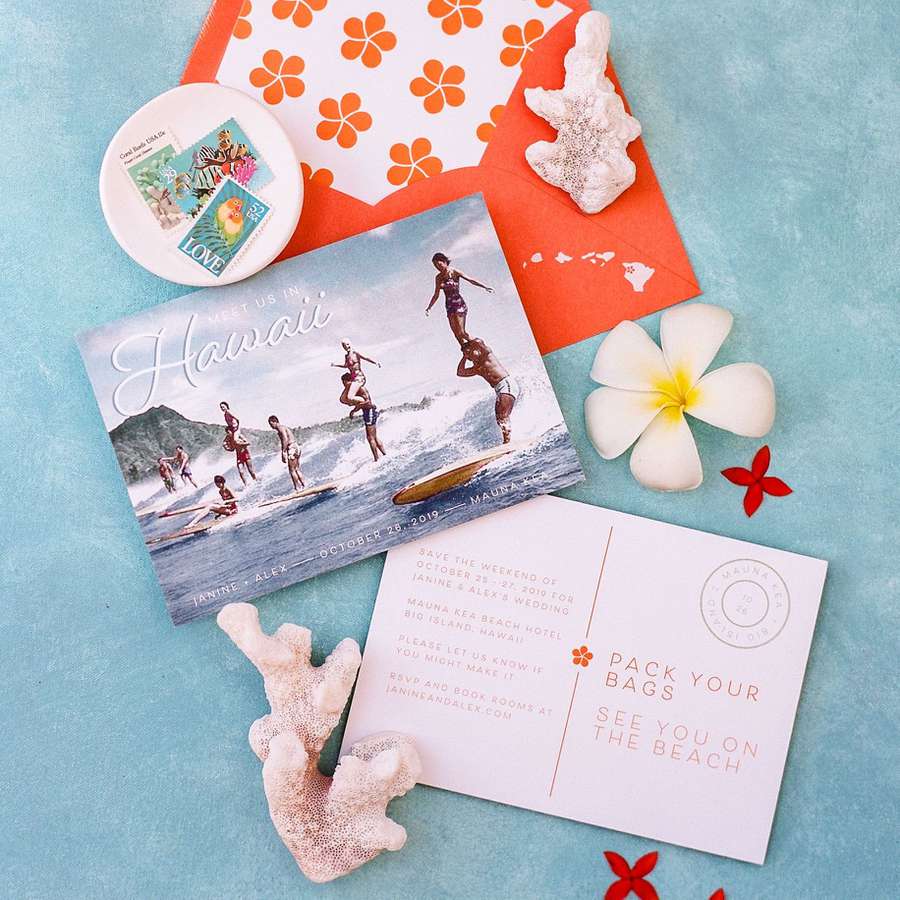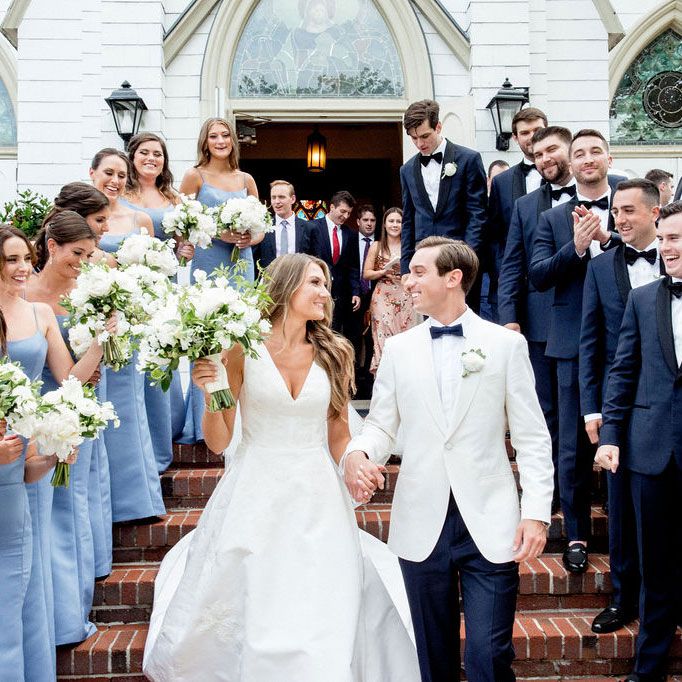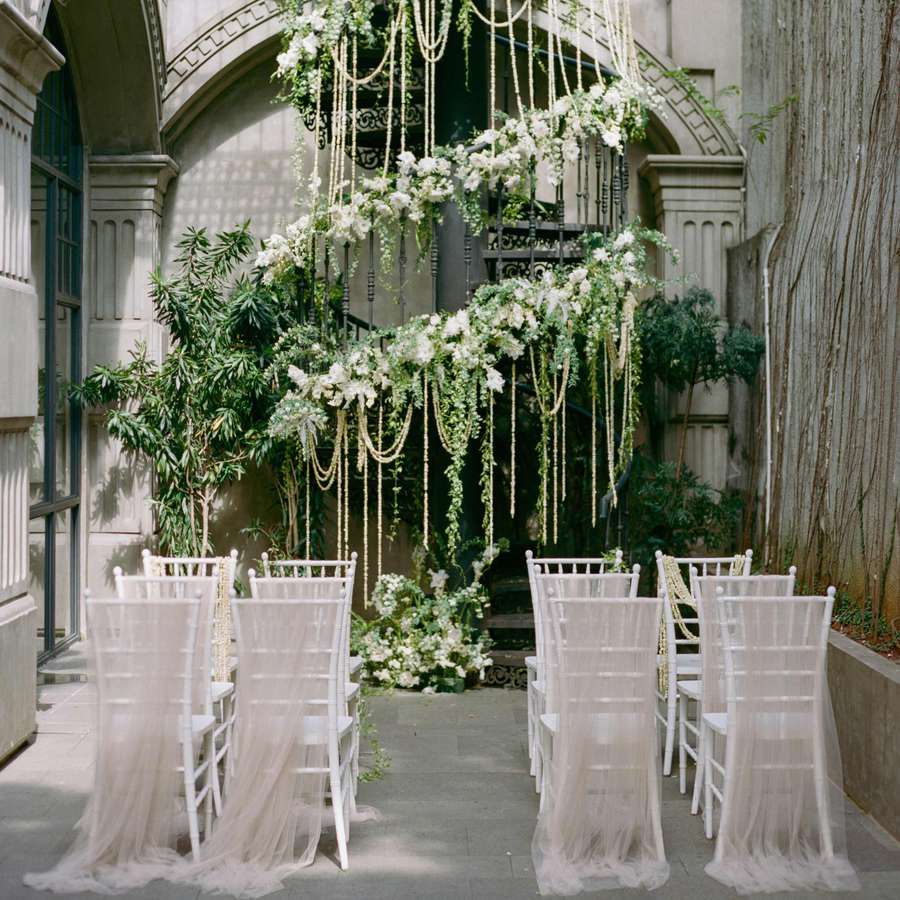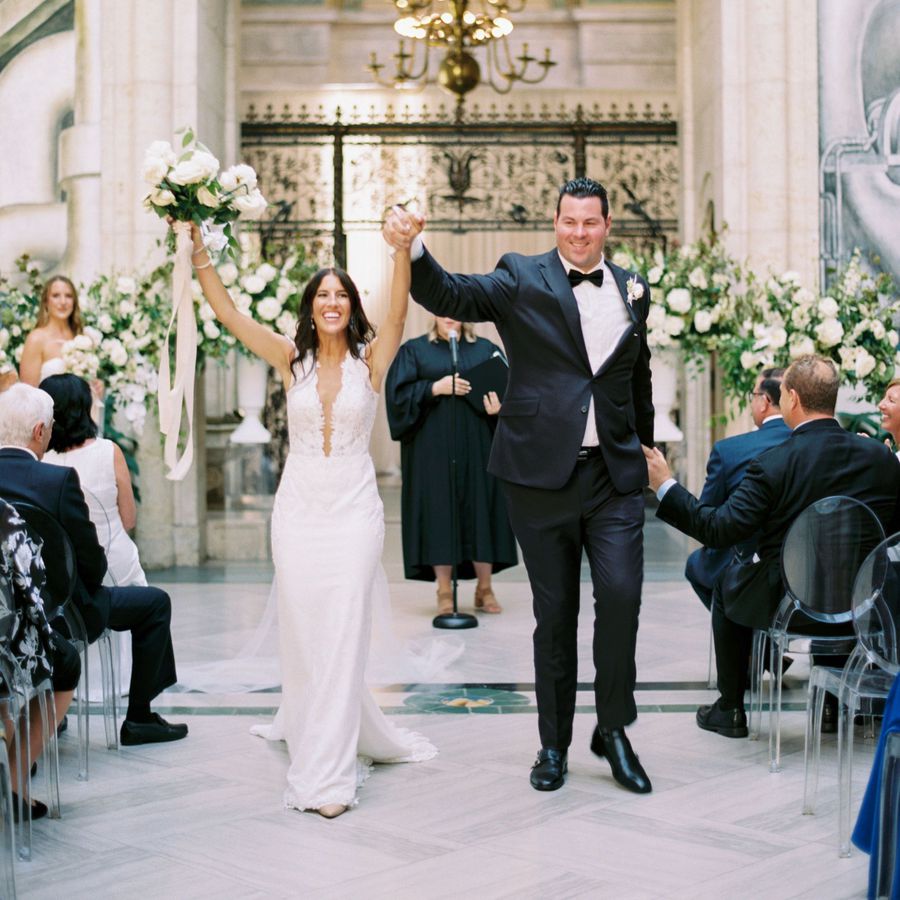:max_bytes(150000):strip_icc()/__opt__aboutcom__coeus__resources__content_migration__brides__public__brides-services__production__2019__01__31__5c533d6abcd8a02d741c45b2_yuki-and-john-wedding08-3b655ee21dc342a5a1701e54ffc3fe5d.jpg)
Photo by Wendy Laurel Photography
Is there anything more romantic than a wedding in Hawaii? With its lush green landscapes, majestic volcanoes, golden sand beaches, and stunning sunsets, it offers the perfect backdrop to say “I do." In addition to its beauty, the island's multi-cultural history influenced by Asian, Western, and Polynesian cultures also means Hawaiian weddings are full of rich traditions.
Many unique elements of a Hawaiian wedding pay homage to ancient Hawaiian traditions and celebrate the spirit of Aloha. From exchanging the leis to the hula dance, learn about popular Hawaiian wedding traditions from planner Mina Singson-Brightman.
Meet the Expert
Mina Singson-Brightman is a wedding planner with Honolulu-based Cherished in Hawaii and has been organizing weddings for over 15 years.
Blowing of the Pū
The ancient Hawaiian fanfare of blowing a pū (conch shell horn) is used to announce an arrival or call attention to a significant event. Singson-Brightman explains, "Many ministers choose to blow the pū at the very start of the ceremony as a way to bring guests into a space of reflection. Others choose to blow it as the couple shares their first kiss as a married couple."
The Oli Aloha
As there was no written language until the 1820s, Hawaiians used songs, chants, and poems to record their history. Because of this, Hawaiian wedding ceremonies usually begin with the "Oli Aloha," a chant meant to prepare the space for blessings and to welcome the happy couple and their guests. The words of the chant are as follows:
Onaona ka hala me ka lehua, He hale lehua no ia na ka noe,
`O ka’u no ia e `ano’i nei,
E li’a nei ho’i o ka hiki mai,
A hiki mai no ka kou,
A hiki pu no me ke aloha…
Aloha e! Aloha e! Aloha e!
The chant says, “This is the sight for which I have longed. Now that you have come, love has come with you."
Hawaiian Ring Blessing and Exchange
Before the couple exchanges the wedding rings, their officiant blesses them using Koa wood, a Ti leaf, and water. The ritual is full of meaning: The Koa symbolizes integrity and strength; the Ti leaf represents good health and prosperity; and the water represents a brand new beginning as spouses. To perform the blessing, the officiant first dips the rings into a wooden bowl of water. Then, the officiant sprinkles water over the ring three times while chanting, “Ei-Ah Eha-No. Ka Malohia Oh-Na-Lani. Mea A-Ku A-Pau," which means, “May peace from above rest upon you and remains with you now and forever.” The ritual concludes as the couple exchanges the rings.
Exchanging Leis
In Hawaii, the lei represents a gesture of Aloha (love) and in a Hawaiian wedding, it’s common for the couple to exchange leis after the ring ceremony. The bride is often presented a pikake lei (fragrant jasmine lei). For the groom, a handsome Ti leaf lei is usually presented. Wedding leis are typically open-ended in shape to symbolize the couple’s endless love and depending on the ceremony’s location will be decorated with different flowers and colors. In Maui, the pink Lakelani rose is common, while the yellow Puailima flower is favored in Oahu.
Pili ā Nai Kealoha
Translated to the “love that binds,” Pili ā Nai Kealoha is a tradition where the officiant ties the hands of the couple with a maile lei (traditional Hawaiian wedding lei) while chanting an accompanying oli (Hawaiian chant) and is considered the Hawaiian equivalent to a sand or candle ceremony. “The maile lei is made with the dark green vines that are twisted together and sometimes decorated with pikake (fragrant Arabian jasmine) or white orchid,” explains Singson-Brightman. “The maile lei is one of the oldest leis and is therefore steeped in tradition and cultural significance. It is known as the lei of royalty, and symbolizes enduring devotion, desire for peace, and respect.”
The Sand Ceremony
For beach weddings, this tradition is similar to a candle lighting ceremony. The couple are each given a small amount of sand from the beach. The sand is then poured into a small bag to represent the union of two individuals, and if applicable, the blending of families.
The Lava Rock Ceremony
This wedding tradition honors one’s connection and commitment to one another. A lava stone, which symbolizes strength and courage, is wrapped in a Ti leaf and left at the site of the wedding ceremony as an offering to Mother Nature and a symbol of a couple’s lasting union.
The Dance of the Hula
The tradition of the hula dance dates back to ancient times. The elegant, hypnotic dance depicts various emotions and elements of nature. A wedding hula can be performed in several ways—sometimes the bride dances the hula for the groom or, other times, the couple hires a troupe of dancers for a performance during the ceremony.
Wedding Music
Music is a big part of Hawaiian life and the most popular wedding song is "Ke Kali Nei Au." Popularly played using ukuleles and slack-key guitars as the first dance song at most Hawaiian weddings, it was adapted from a 1926 song written by Charles E. King. Over the years it’s been translated and performed numerous times but the most famous version is the one sung by Elvis Presley in the movie Blue Hawaii.
The Wedding Feast
Weddings call for a traditional luau (Hawaiian party) where the star of the feast is a kalua pig that’s been slow-cooked in an imu (underground oven) before it is shredded and served. Hawaiian cuisine typically incorporates native ingredients with Asian and Polynesian flavors. Popular dishes include sesame-crusted ahi (tuna) and a Hawaiian-style bouillabaisse (fish stew) spiked with tropical fruits like lychee, guava, papaya, and pineapple. Other dishes worth noting are poi (taro root paste), moi poke (seasoned raw fish), lau lau (cooked meat wrapped in Ti leaves), and kulolo (brown sugar coconut pudding). Lilikoi, a Hawaiian variant of passion fruit, makes a great wedding cake.
Wedding Favors
As a parting gift, some couples choose products made in Hawaii like Hawaiian coffee or customized cookies from Honolulu Cookie Company. Ask your planner about local products to give to your guests!
